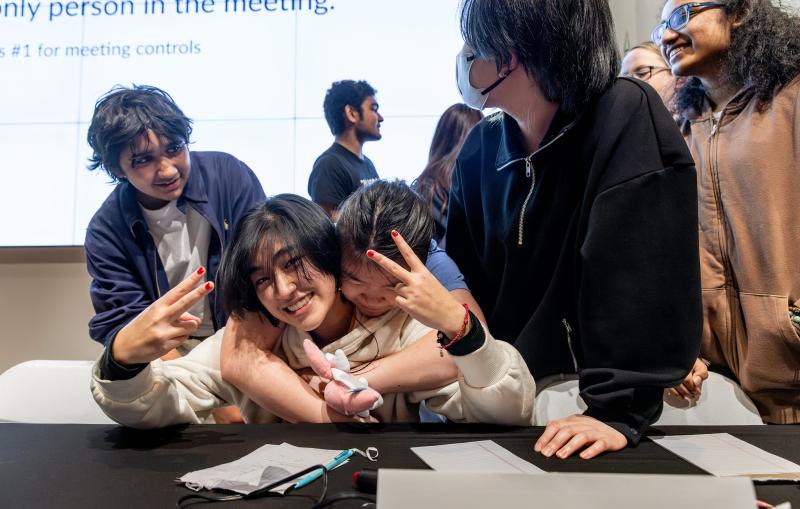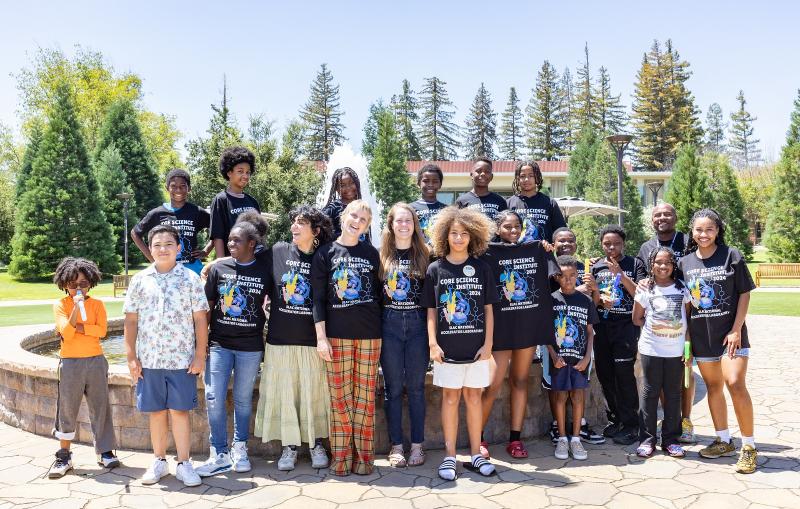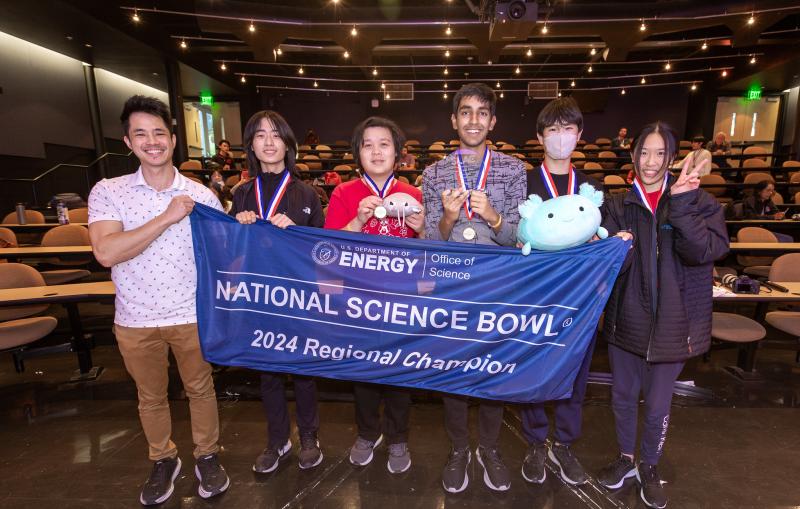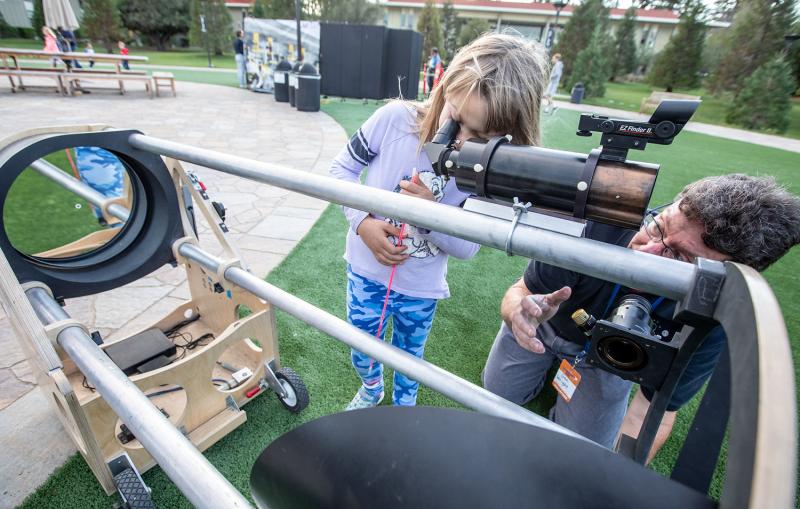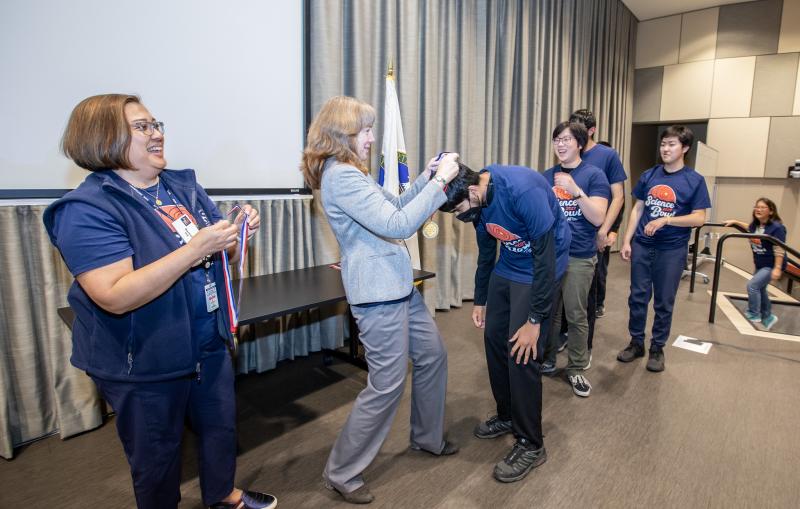Annual Science Bowl at SLAC a Launch Pad for National Competition
More than 100 science students from 20 Bay Area high schools converged on the lab Saturday to compete in the annual Science Bowl competition at SLAC. Led by their coaches, 120 students faced questions testing their knowledge of astronomy, biology, chemistry, earth sciences, physics and math.
By Diane Rezendes Khirallah
More than 100 science students from 20 Bay Area high schools converged on the lab Saturday to compete in the annual Science Bowl competition at SLAC. Led by their coaches, 120 students faced questions testing their knowledge of astronomy, biology, chemistry, earth sciences, physics and math.
After a grueling round-robin morning competition, they lunched on pizza and Caesar salad, waiting to hear if their team made it to the afternoon’s elimination rounds. The result, though unusual, was not unheard of: a three-way tie. An extra tie-breaker elimination round was added, and eight teams went on to the afternoon finals, bracket-style.
In the end, the laurels went to Lynbrook High School of San Jose, marking their third victory in eight years. The annual contest at SLAC is one of several regional qualifiers held around the country, with winning teams securing a slot to compete in the national Department of Energy Science Bowl in Washington, D.C., April 26-30.
Chi-Chang Kao, director of SLAC’s Stanford Synchrotron Radiation Lightsource, presented awards on behalf of the DOE to the top three schools: Lynnbrook, Bellarmine College Preparatory High School (San Jose) and Saratoga High School. He warmly congratulated each team member, and then spoke briefly to the students, their parents and coaches.
While SLAC doesn’t see the Science Bowl as a recruiting opportunity, per se, Kao was clearly enthusiastic about sharing the excitement of working here. “We are so pleased to host the regional competition,” he said later. “These students represent the best of science education; their enthusiasm and hunger for knowledge inspires us. Perhaps one day, some of them will join us in our work here at SLAC.”
Volunteer Alvin Jin knows the Science Bowl better than most: The 18-year-old freshman from the University of California-Berkeley competed for three years with his team from Homestead High School in Cupertino, making it to the national competition during his senior year. This year, the math and geology major served as a scorekeeper, admitting that even as he’s keeping score, he mentally plays along, answering the questions.
After three years in competition, it’s nearly an automatic response. “Most questions are doable,” Jin said.
And he observes strategy. He can pick out a strong team immediately – like Lynbrook, whose red T-shirts featured the Periodic Table (with science students’ initials replacing the more familiar elements) and the slogan, “All the right elements.”
Jin had his eyes on them early on. He noticed their style was very similar to those of teams he competed against at the national level. “All of (the students) know the answers, but most people are afraid to buzz in and be wrong,” he said. At the national Science Bowl, the winning teams are so fast, “they don’t even finish reading the questions before a student is answering them. They’re not afraid to just hit the buzzer and answer quickly. Lynbrook High School has that mindset.”
In the final moments, and with a commanding lead, Lynbrook team captain Marcus Schorow decided to have some fun. In answer to the last question of the day he said, “My answer is: We had a great day, and we’ll be proud to represent the Bay Area at Nationals.”
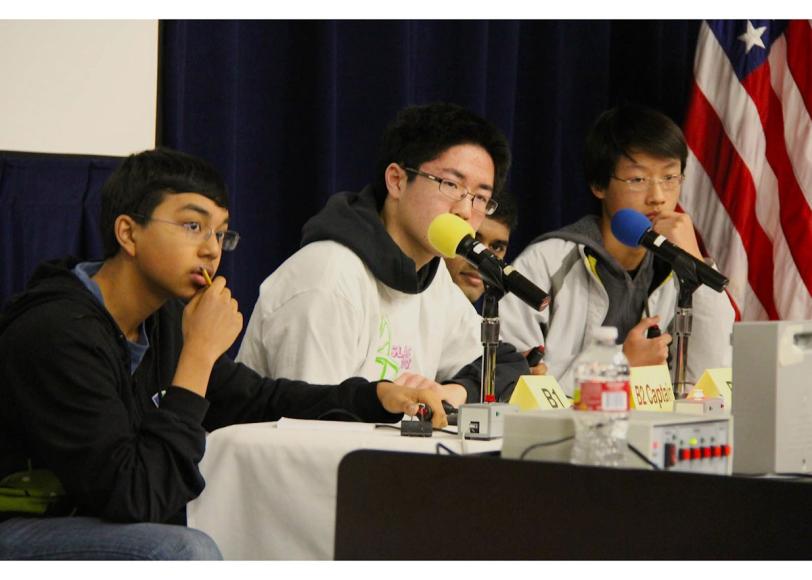
(Photo by Andy Freeberg)
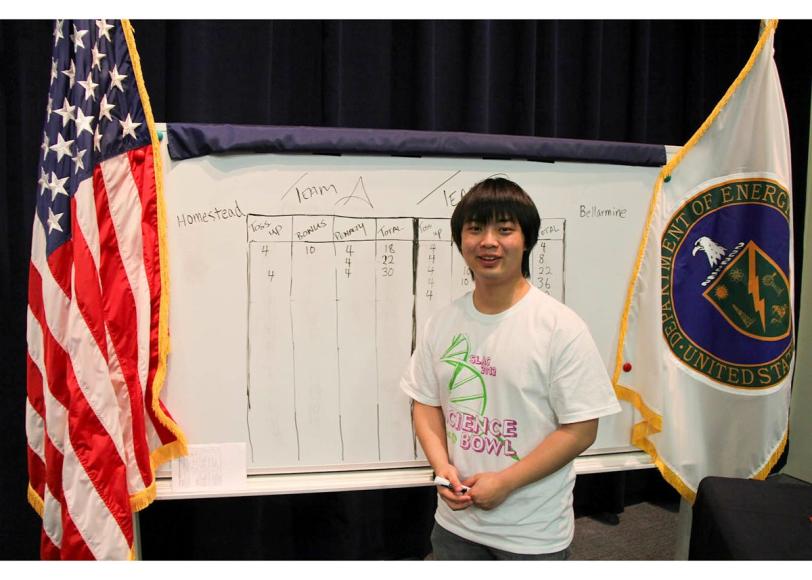
(Photo by Andy Freeberg)
